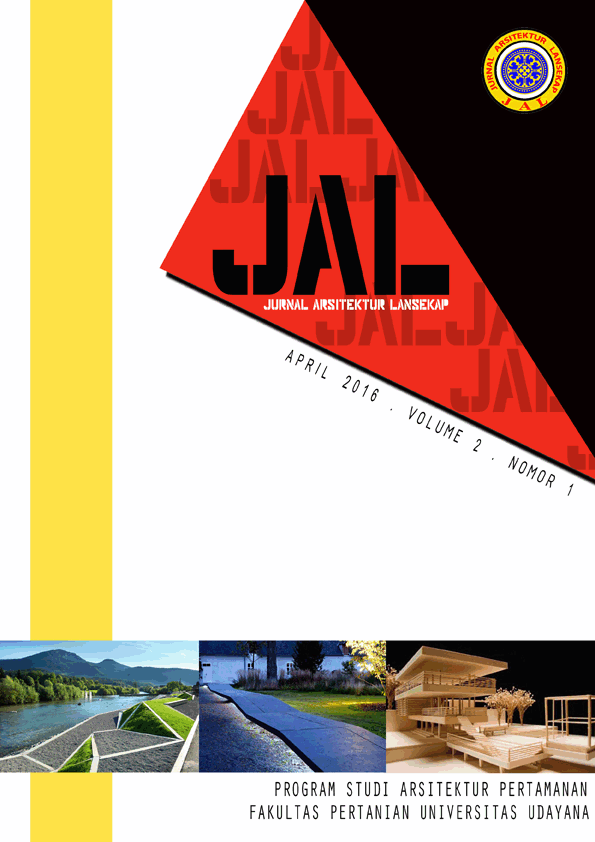Perencanaan Lanskap Pantai Pangandaran Berbasis Mitigasi Bencana Tsunami
Abstract
ABSTRACTCoastal Landscape Planning in Pangandaran Based on Tsunami Disaster Mitigation
The Indonesian archipelago has a long coastline of about 81,000 km. Some coastal areas in Indonesia, classified in areas with high risk of tsunami. The objective of this research was to develop a coastal planning in Pangandaran and provide recommendations related to tsunami disaster mitigation. The tsunami ever occurred at the site studied, namely in 2006. The method used in this study is a modification of the method of planning (Gold 1980) which comprise the step of preparation, inventory, analysis, synthesis, and planning. Analysis is conducted analysis of regional vulnerability to tsunamis. The results from the analysis found that Pangandaran beach is classified as an area highly vulnerable to tsunami, based on an assessment of the slope, elevation, land use, distance from the river and distance from the coast. Analysis of the suitability of the area for evacuation was conducted to determine the exact area used as a tsunami evacuation. The concept of planning is divided into space concept, the concept of activity, the concept of infrastructure, circulation concept and the concept of vegetation. The concept that there is then developed to produce a landscape plan, plan activities, circulation plan, vegetation plans, and plan infrastructure facilities.
Keywords: coastline, mitigation, Pangandaran, planning, tsunami
Downloads
Download data is not yet available.
How to Cite
RAMDHANY, RIZKY RAHADIAN; MAKALEW, AFRA DN.
Perencanaan Lanskap Pantai Pangandaran Berbasis Mitigasi Bencana Tsunami.
Jurnal Arsitektur Lansekap, [S.l.], p. 62-71, apr. 2016.
ISSN 2442-5508.
Available at: <https://ojs.unud.ac.id/index.php/lanskap/article/view/20410>. Date accessed: 17 dec. 2025.
doi: https://doi.org/10.24843/JAL.2016.v02.i01.p07.
Issue
Section
Articles
An author who publishes in the Jurnal Arsitektur Lansekap (JAL) agrees to the following terms:
- Author retains the copyright and grants the journal the right of first publication of the work simultaneously licensed under the Creative Commons Attribution-ShareAlike 4.0 License that allows others to share the work with an acknowledgement of the work's authorship and initial publication in this journal
- Author is able to enter into separate, additional contractual arrangements for the non-exclusive distribution of the journal's published version of the work (e.g., post it to an institutional repository or publish it in a book) with the acknowledgement of its initial publication in this journal.
- Author is permitted and encouraged to post his/her work online (e.g., in institutional repositories or on their website) prior to and during the submission process, as it can lead to productive exchanges, as well as earlier and greater citation of the published work (See The Effect of Open Access).
Read more about the Creative Commons Attribution-ShareAlike 4.0 Licence here: https://creativecommons.org/licenses/by-sa/4.0/.







